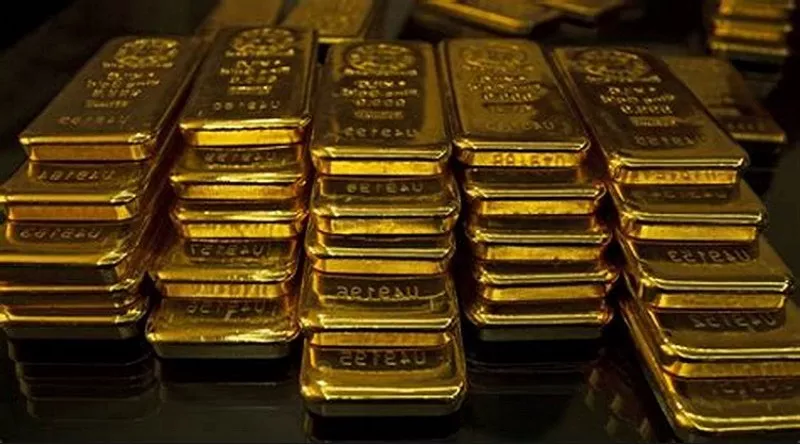In the intricate world of financial markets, the price of gold often serves as a barometer for economic sentiment, geopolitical tensions, and investor confidence. Today, as gold experiences a notable surge, it’s imperative to delve into the underlying factors propelling this upward trajectory. This article seeks to dissect the dynamics contributing to the current rise in gold prices, offering insights into its significance and implications.
Global Economic Uncertainty: A Driving Force
Geopolitical Turmoil: A Catalyst for Safe-Haven Demand
As geopolitical tensions escalate across various regions, investors seek refuge in assets perceived as safe havens. Gold, with its intrinsic value and historical reputation for stability, emerges as a preferred choice during times of uncertainty. Recent geopolitical events, such as escalating conflicts or diplomatic tensions, amplify risk aversion among investors, driving up demand for gold and subsequently its price.
Monetary Policy and Central Bank Actions
Central bank policies play a pivotal role in shaping market dynamics, particularly for precious metals like gold. Decisions regarding interest rates, quantitative easing measures, and currency interventions can significantly impact the value of fiat currencies and, consequently, the price of gold. In an environment of loose monetary policy or concerns over currency debasement, gold often garners increased attention as a hedge against inflation and currency depreciation.
Market Volatility and Investor Sentiment
Equity Market Fluctuations: Correlation with Gold Prices
Gold exhibits an inverse relationship with equity markets, often serving as a hedge against stock market downturns. During periods of heightened volatility or downward pressure on equities, investors reallocate their portfolios to include assets like gold, which are perceived as less risky and more resilient to market turbulence. Consequently, a downturn in equities can fuel demand for gold, pushing its price higher.
Investor Sentiment and Speculative Activity
Beyond fundamental factors, sentiment-driven fluctuations also influence gold prices. Investor sentiment, shaped by economic indicators, geopolitical developments, and market sentiment surveys, can lead to abrupt shifts in gold demand and pricing. Speculative activity in futures and options markets further exacerbates price movements, amplifying both upside and downside volatility in the gold market.
Supply and Demand Dynamics
Supply Constraints and Production Challenges
The supply-side dynamics of gold are characterized by a combination of geological constraints, production challenges, and regulatory factors. Gold mining operations face various hurdles, including declining ore grades, rising production costs, and environmental regulations. These challenges, coupled with limited new discoveries of economically viable deposits, constrain the growth of global gold supply, exerting upward pressure on prices.
Demand Drivers: Industrial, Jewelry, and Investment
Gold’s intrinsic value extends beyond its monetary attributes, encompassing its utility in various industrial applications and cultural significance in jewelry. Industrial demand for gold, particularly in electronics and technology sectors, remains robust, supported by its exceptional conductivity and corrosion resistance. Additionally, the allure of gold jewelry persists across diverse cultures, underpinning steady demand in consumer markets.
Macro-Economic Trends and Inflationary Pressures
Inflationary Concerns: Gold as an Inflation Hedge
Inflationary pressures, stemming from factors such as expansionary fiscal policies, supply chain disruptions, and rising commodity prices, have garnered increasing attention among investors. Gold historically serves as a hedge against inflation, preserving purchasing power and wealth during periods of currency depreciation. As inflationary expectations rise, investors flock to gold as a store of value, driving up its price.
Global Economic Outlook and Growth Prospects
The trajectory of global economic growth exerts a significant influence on gold prices. Economic expansion, characterized by robust consumer spending, business investment, and trade activity, typically dampens demand for safe-haven assets like gold. Conversely, economic downturns or recessionary fears prompt investors to seek refuge in gold, anticipating its resilience amid economic turbulence.
See Also The Best Day to Buy Gold: A Comprehensive Analysis
Conclusion
In conclusion, today’s surge in gold prices reflects a confluence of multifaceted factors, ranging from geopolitical tensions and market volatility to supply constraints and macroeconomic trends. As investors navigate an increasingly complex and uncertain landscape, gold retains its allure as a reliable store of value and portfolio diversifier. Understanding the intricate interplay of these dynamics is essential for market participants seeking to decipher and navigate the forces shaping gold price movements. As the global economic and geopolitical landscape continues to evolve, gold’s role as a timeless asset of intrinsic value remains steadfast, anchoring portfolios and preserving wealth amid uncertainty.


